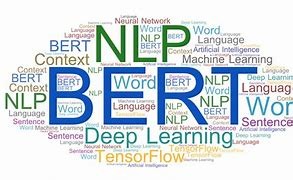Bidirectional Encoder Representations from Transformers (BERT): A Game-changer in NLP
Bidirectional Encoder Representations from Transformers (BERT): A Game-changer in NLP
The BERT future is bright, with advancements in model architecture, pre-training, and context understanding expected to further enhance its capabilities.
 BERT
BERT

Imagine a model that can read text like a human, understanding not just the individual words but also the subtle nuances of language, context, and even relationships between sentences. This is the promise of Bidirectional Encoder Representations from Transformers (BERT), a revolutionary machine learning model that has transformed Natural Language Processing (NLP).
Here's what makes BERT tick
- Bidirectional attention: Unlike previous models that processed text left-to-right, BERT considers both the preceding and following words, giving it a deeper understanding of context and word relationships. This makes it adept at handling ambiguity, sarcasm, and complex sentence structures.
- Transformer architecture: BERT leverages the Transformer architecture, a powerful neural network capable of capturing long-range dependencies and nuanced relationships within text. This allows it to understand not just surface meaning but also hidden connections and implications.
- Pre-training on massive datasets: BERT is trained on massive amounts of text data, like books and Wikipedia articles. This "learning by example" equips it with a vast vocabulary and a strong understanding of how language works in real-world contexts.
- During pre-training, BERT tackles two important tasks:
- Masked Language Modeling (MLM): It learns to predict masked-out words based on the surrounding context, honing its ability to infer meaning.
- Next Sentence Prediction (NSP): By predicting whether two sentences consecutively appear in the original text, BERT grasps the relationships between sentences and how they build upon each other.
The BERT future is bright, with advancements in model architecture, pre-training, and context understanding expected to further enhance its capabilities. From generating creative text formats to seamlessly interacting with real-world environments, BERT's potential for transforming the way we interact with machines is vast.
Advancements and Future Directions in Bidirectional Encoder Representations
The landscape of natural language processing (NLP) has been irrevocably transformed by the advent of Bidirectional Encoder Representations (BERT). Introduced in 2018 by Google AI, BERT revolutionized our ability to understand and manipulate language text by pre-training a deep neural network on massive amounts of unlabeled text data. This article delves into the advancements in BERT architecture, explores its diverse applications, and ponders its future directions.
Unveiling the Architecture: A Peek into BERT's Inner Workings
BERT's core lies in its transformer architecture, a unique attention mechanism that allows the model to consider the entire context of a word when interpreting its meaning. Unlike unidirectional models that analyze text sequentially, BERT processes words bidirectionally, capturing relationships between words regardless of their order. This enables it to excel in tasks like sentiment analysis, question answering, and natural language inference.
Furthermore, BERT utilizes a masked language modeling (MLM) objective function. In essence, BERT is trained to predict masked words within a sentence, forcing it to learn intricate semantic relationships between words. This pre-training on vast amounts of text imbues BERT with a deep understanding of language nuances and context dependencies.
Beyond Hype: Demystifying BERT's Applications and Use Cases
BERT's versatility has spawned a plethora of applications across various domains.
Here are some key examples:
- Search engines: BERT can power more nuanced and context-aware search results, understanding the searcher's intent and returning relevant information even for complex queries.
- Chatbots: BERT-powered chatbots can engage in more natural and engaging conversations, comprehending user queries and responding with appropriate context and sentiment.
- Machine translation: BERT can improve the accuracy and fluency of machine translation by considering the broader context of words within a sentence.
- Text summarization: BERT can automatically generate concise and informative summaries of documents, capturing the key points while omitting irrelevant details.
- Question answering systems: BERT-based question answering systems can accurately answer complex questions posed in natural language, even when the answer isn't explicitly stated in the text.
These are just a glimpse into the vast potential of BERT. As research progresses, we can expect even more innovative applications to emerge, transforming everything from education and healthcare to creative writing and marketing.
Charting the Course: A Glimpse into BERT's Future Horizons
While BERT has undoubtedly achieved remarkable feats, the journey is far from over.
.jpg)
The future of BERT holds exciting possibilities:
- Fine-tuning for specific tasks: BERT can be further fine-tuned for specific tasks by training it on domain-specific data. This can lead to even more specialized and nuanced applications.
- Interpretability and explainability: Making BERT's decision-making process more transparent is crucial for building trust and understanding its limitations. Research efforts are underway to develop methods for interpreting BERT's outputs.
- Multimodality: Integrating BERT with other modalities like vision and audio can unlock new possibilities, enabling tasks like video captioning and cross-modal information retrieval.
- Efficiency and scalability: Training and running BERT can be computationally expensive. Developing more efficient and scalable versions of the model is essential for widespread adoption.
By addressing these challenges and exploring new frontiers, BERT has the potential to not only revolutionize NLP but also impact various aspects of our lives where language plays a crucial role. The future of BERT promises to be as exciting and transformative as its inception, pushing the boundaries of what language models can achieve.
In conclusion, BERT's advancements have redefined the capabilities of NLP, membuka new possibilities for understanding and manipulating language. As we delve deeper into its architecture, explore its diverse applications, and chart its future directions, BERT stands poised to shape the future of how we interact with and comprehend the world around us through the power of language.





Comments
Post a Comment